YOU ARE LEARNING:
Animal Cells
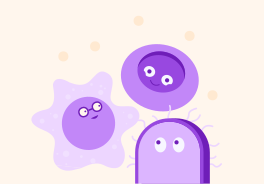
Animal Cells
We will look in detail the nature and components of animal cells.
This is a simplified model of an animal cell
This lesson will give a super speedy introduction to 5 components you find in animal cells.
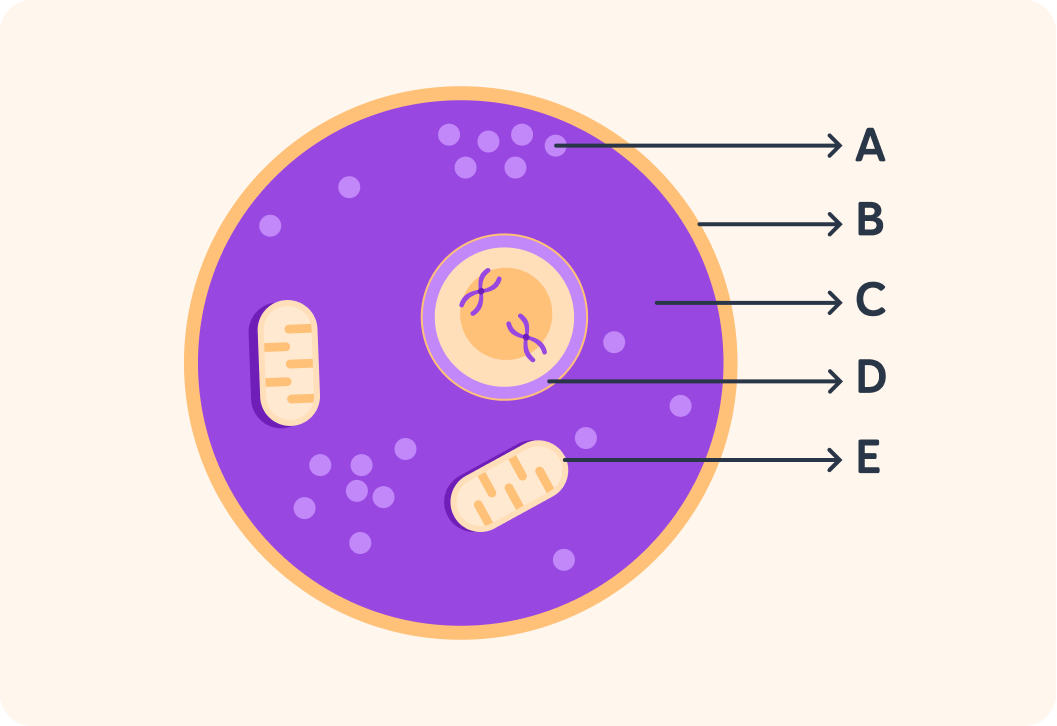
The cell membrane goes all around the outside of the cell and keeps the cell together. Which letter points to the cell membrane?


Cells have only one nucleus. It sits at the centre of the cell. Which letter points to the nucleus?

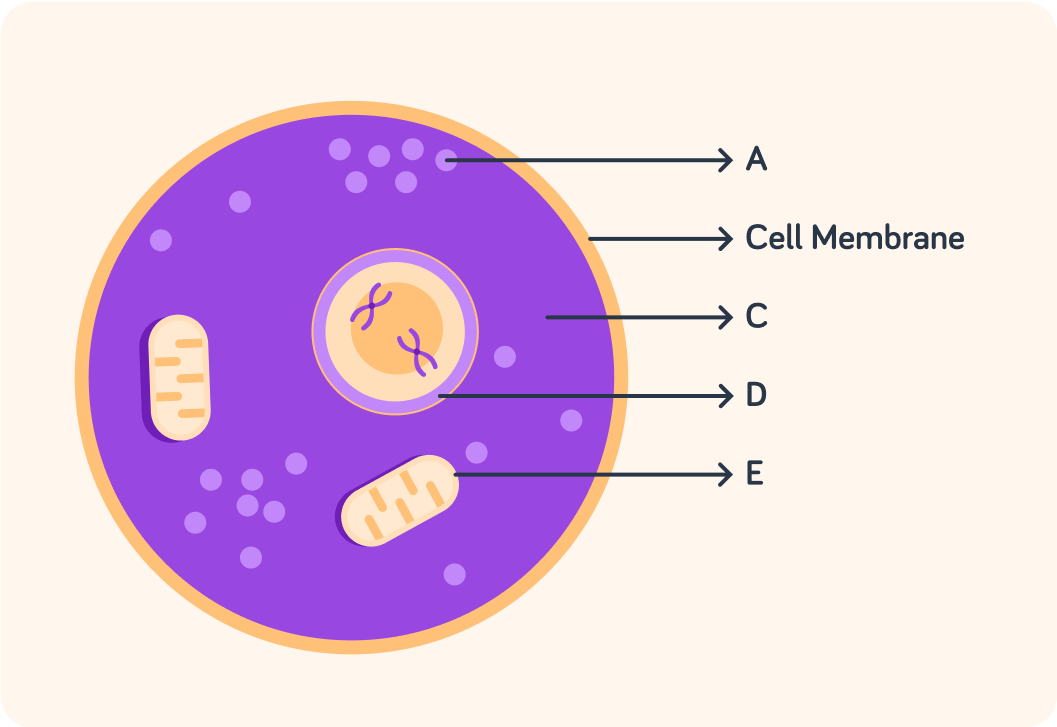
The cell is filled out by a gel-like fluid, called the cytoplasm. Which letter points to the cytoplasm?

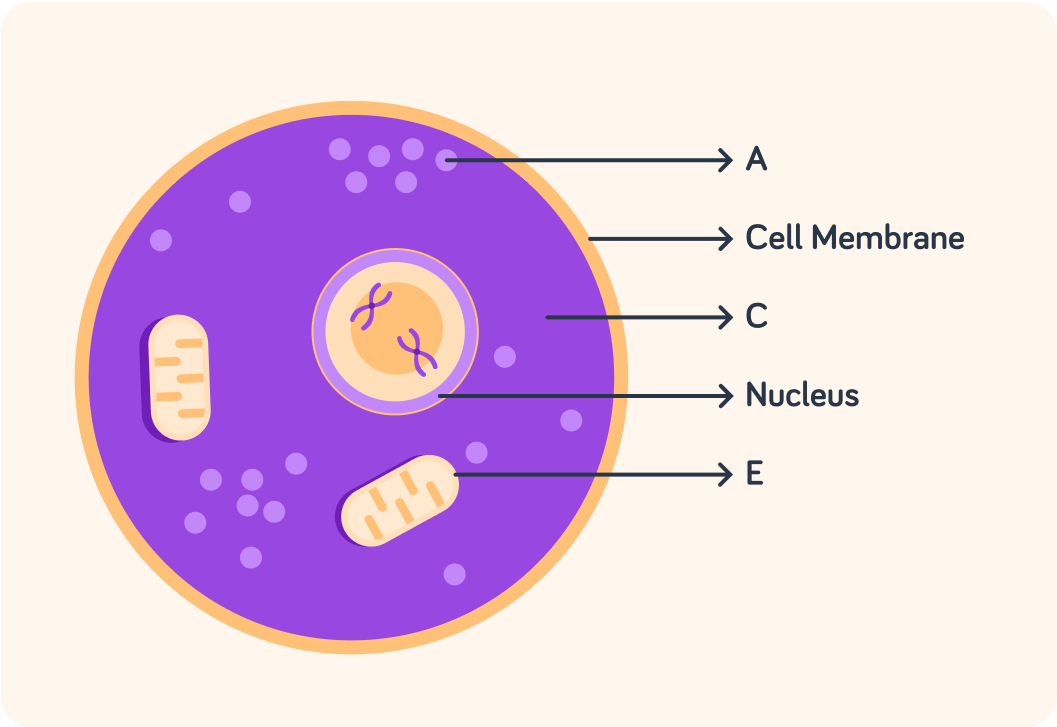
Finally, animal cells also contain something called ribosomes and mitochondria
This lesson gives a short introduction to what these 5 different components do.
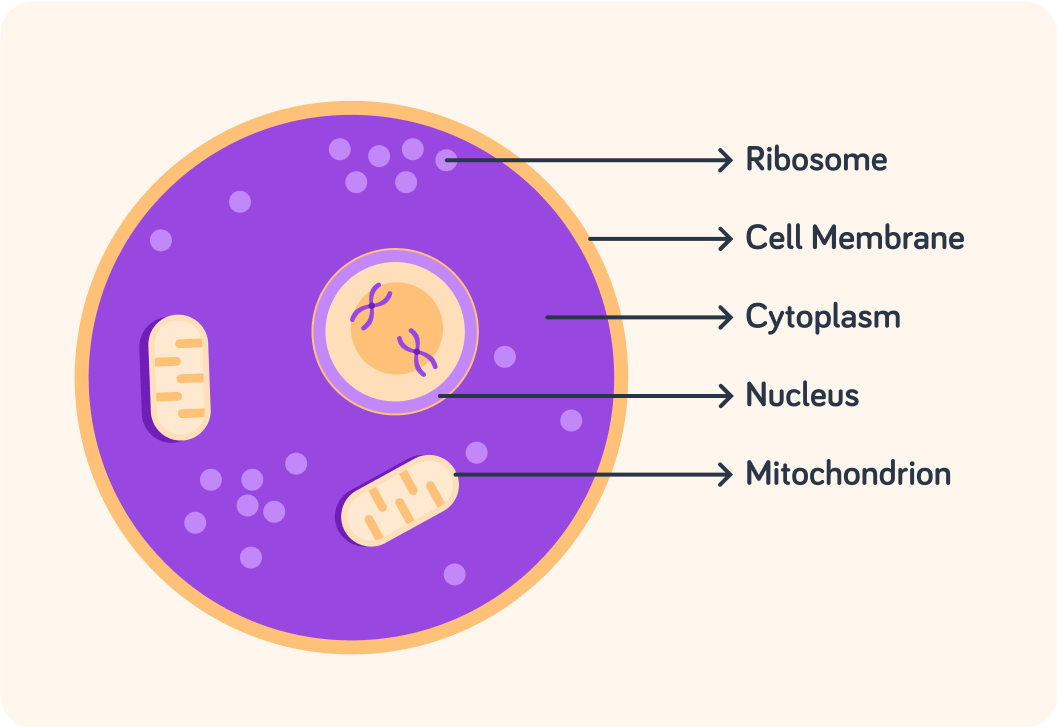
The cell membrane makes sure that the cell is one entity
It makes sure the cytoplasm of different cells don't just spill out into each other.
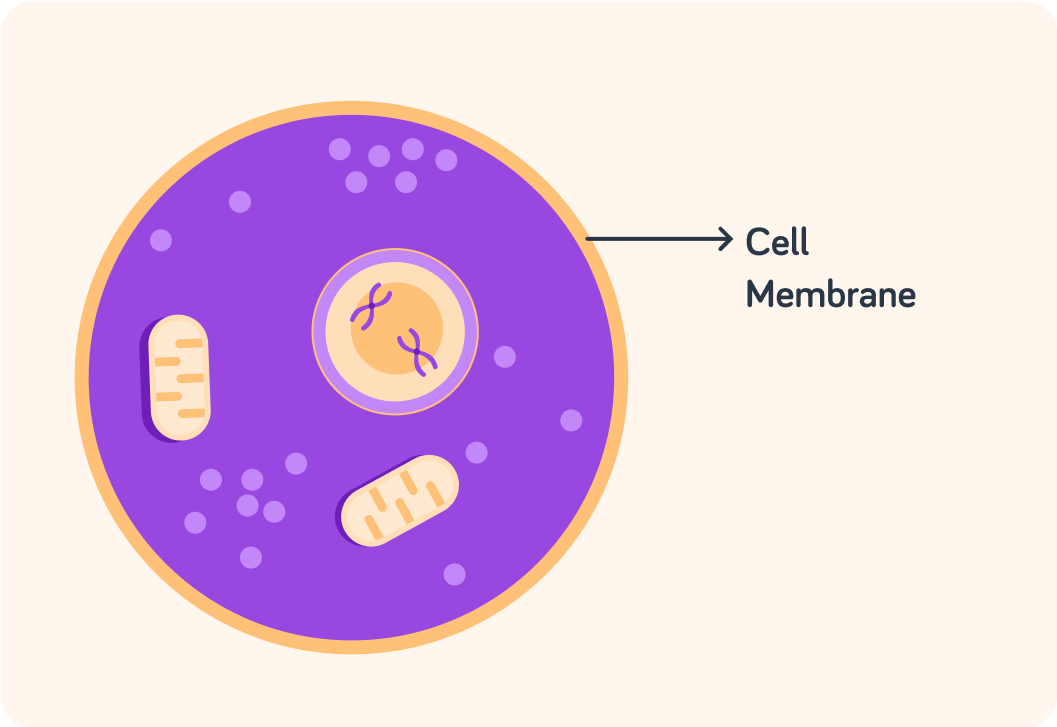
But the cell membrane also acts as a kind of "border control". What do you think that means?


The nucleus at the centre of the cell stores the cell's DNA. What is DNA?

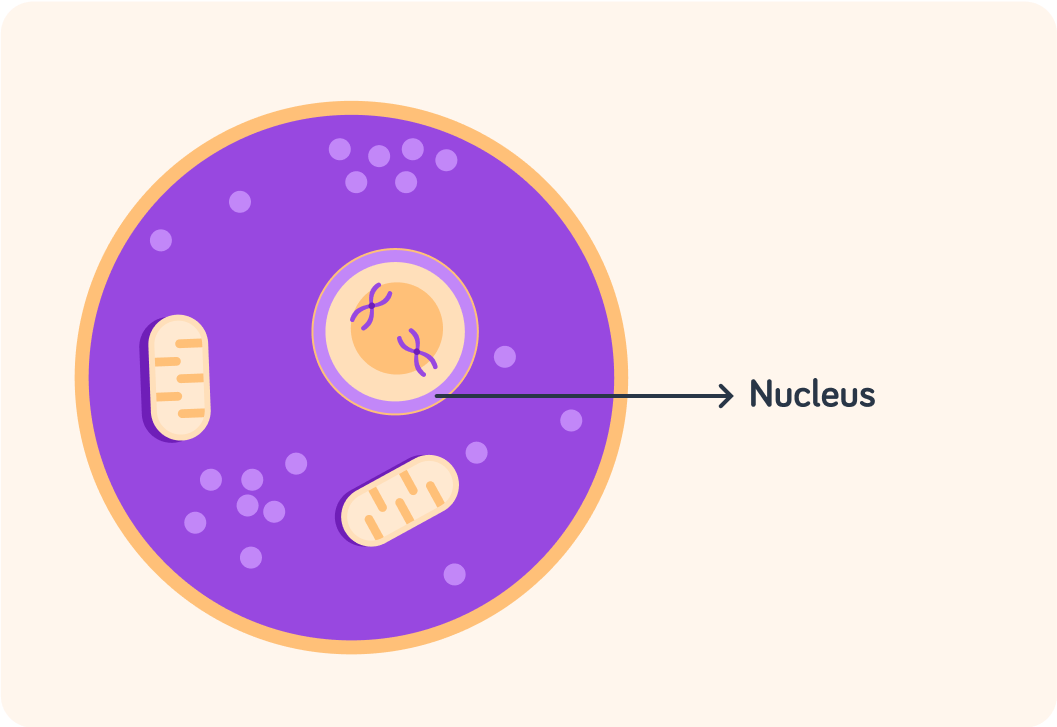
So the nucleus stores the cell's genetic material
The genetic material (DNA) holds the instructions for how the cell should work, so it is extremely important that it is kept safe!

Sometimes things have to move inside the cell, from the nucleus to the ribosomes, for example. To do that they have to move through the gel-like fluid inside the cell which is called the ______________.


The cell's cytoplasm is a gel-like fluid that allows transport between for example the nucleus and ribosomes
If the cytoplasm wasn't there, nothing would be able to move around inside the cell.

Cells produce proteins for various different purposes in the body
For example as enzymes or hormones or antibodies.

The letter A points to one of these protein factories. What was the name of them?


Finally, animal cells also need to generate energy. Which component must do that?


Pick all the 5 components of animal cells that this lesson has introduced.

You can select multiple answers
Where is the cell's genetic material (DNA) stored?

What do the cell's mitochondria do?

What does the cell membrane do?

Where does the cell produce proteins?

What is the name of the gel-like fluid that allows transport inside the cell?

To summarise!
This lesson has introduced 5 components of animal cells.

The cell membrane...
regulates transport in and out of the cell and holds the cell's cytoplasm together.

The cytoplasm...
is a gel-like fluid that allows transport inside the cell, for example between the nucleus and the ribosomes.

The nucleus...
stores the cell's genetic material.

The ribosomes...
are the cell's protein factories.

The mitochondria...
generate energy for the cell.

This was only a super speedy intro to these different components of an animal cell
Much more detail on cell membranes, cytoplasm, nuclei, ribosomes and mitochondria in later lessons.

